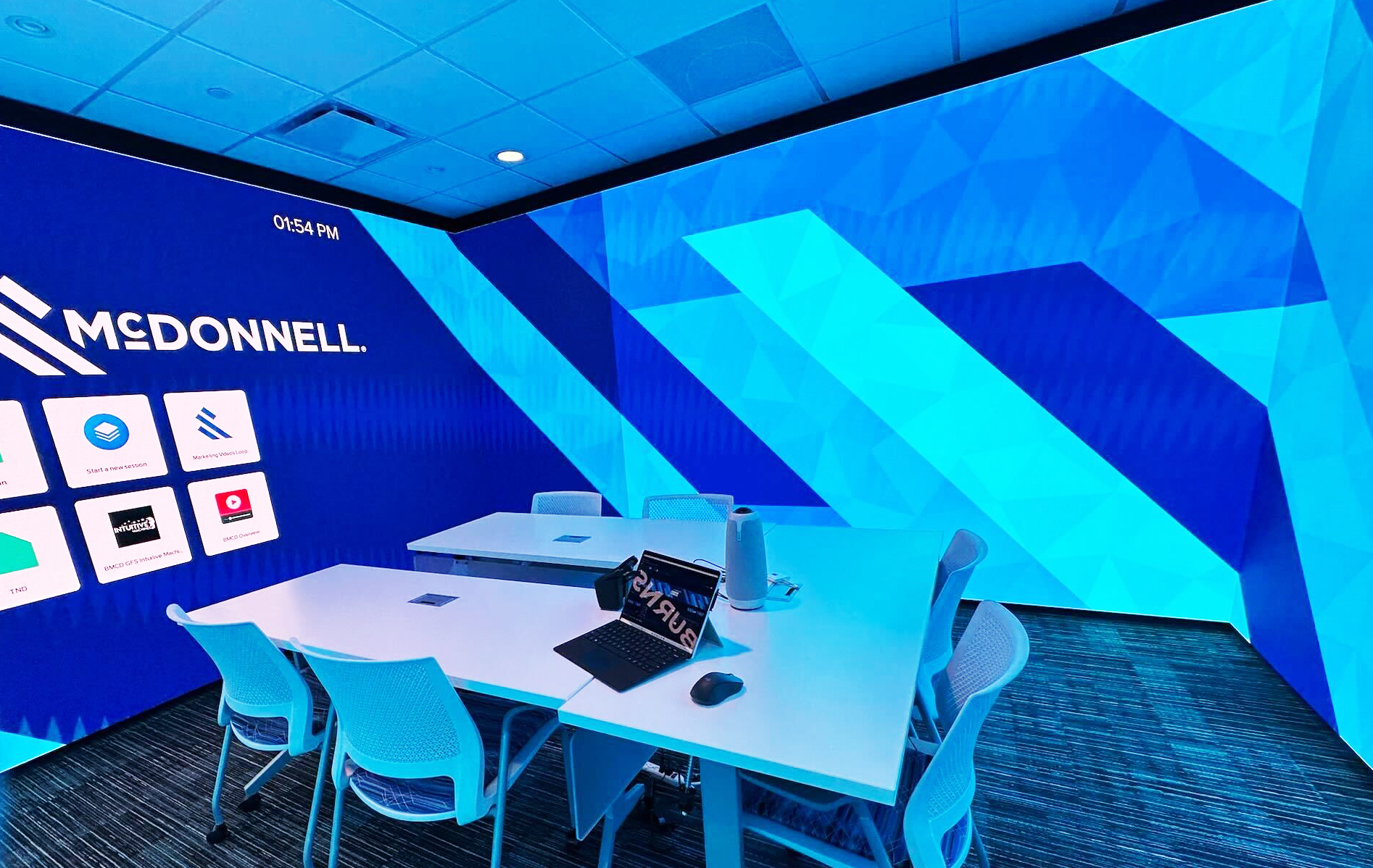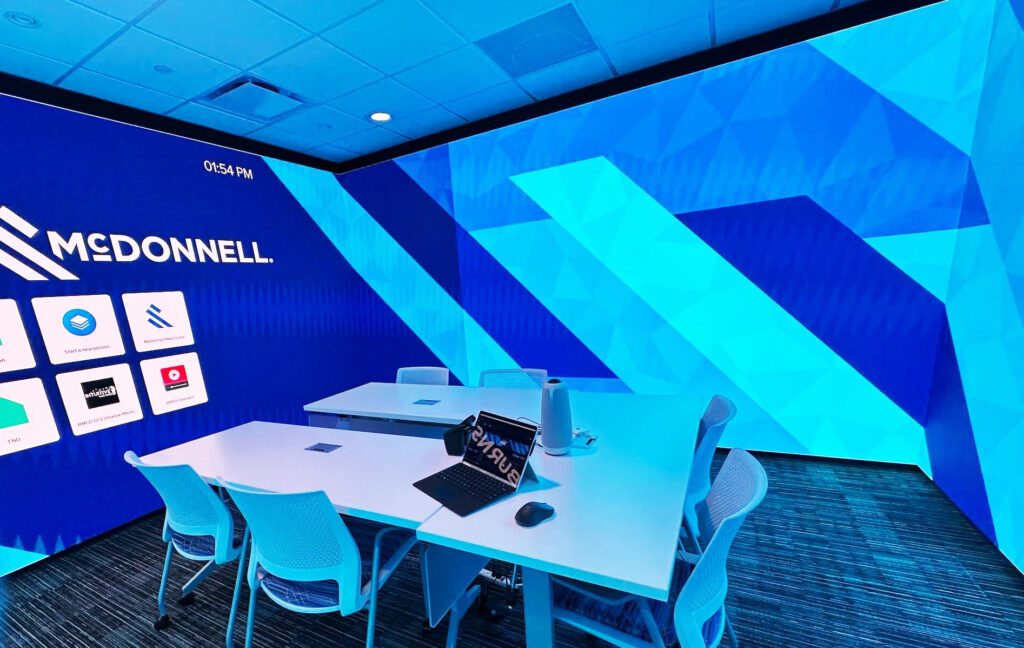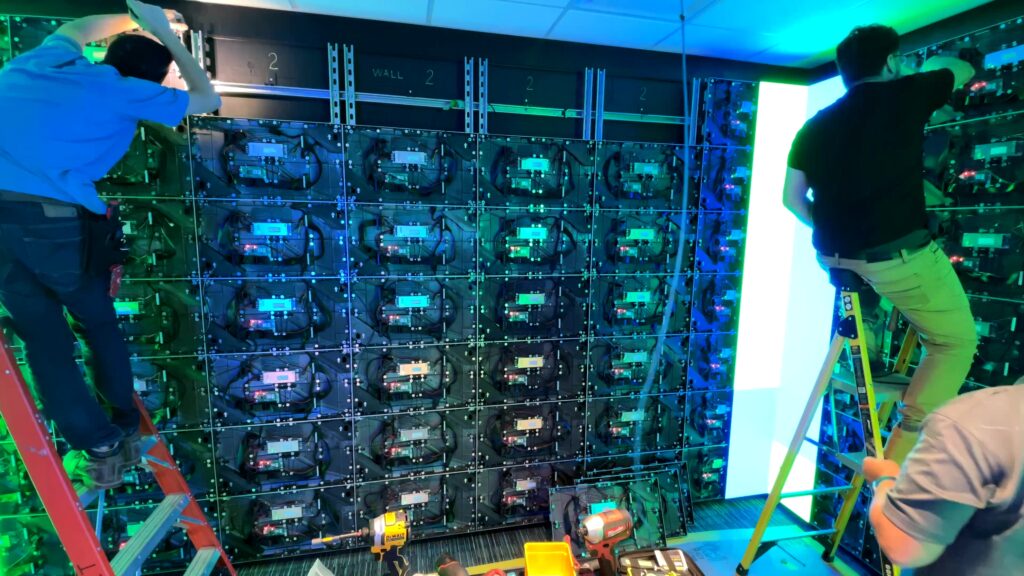
how to determine how many led’s in my video wall
LED video walls are a powerful tool for communication and entertainment. They can transform any space into a dynamic visual experience. But how do you determine the number of LEDs needed for your video wall?
The answer lies in understanding the key factors that influence this calculation. These include pixel pitch, resolution, wall size, and viewing distance. Each of these elements plays a crucial role in determining the LED count.

(Check out our 360 LED Room Project)
This article will guide you through the process of calculating the number of LEDs for your video wall. It will provide a comprehensive understanding of the factors involved and the steps necessary to make an informed decision.
Whether you’re an AV professional, event planner, business owner, or tech enthusiast, this guide will equip you with the knowledge you need. So, let’s dive in and explore how to determine how many LEDs are in your video wall.
Understanding LED Video Walls
LED video walls are composed of multiple LED panels seamlessly integrated to create a larger display. These panels can be configured in various arrangements to suit different needs and environments. They are commonly used in conference centers, retail spaces, and stadiums.
Each LED panel comprises thousands of tiny LEDs that work together to produce a vibrant and clear image. The number of LEDs in these walls varies depending on several factors. This includes pixel pitch and resolution, which we’ll explore next.

The Role of Pixel Pitch in LED Video Walls
Pixel pitch refers to the distance between the centers of two adjacent pixels. It is a critical factor that affects the clarity and detail of the display. A smaller pixel pitch leads to higher LED density and enhanced image clarity.
The choice of pixel pitch should match the intended viewing distance. For example, a closer viewing distance requires a smaller pixel pitch. This ensures the audience perceives a sharp and high-quality image. Check out our other blog post about choosing the right video wall here for more useful information.
Resolution and Its Impact on LED Count
Resolution determines how much detail a display can show. It is calculated by the number of pixels across the width and height of the display. Higher resolutions require more LEDs to achieve the desired image quality.
Understanding the relationship between resolution and LED count is crucial for planning your video wall. A high-resolution display offers better detail but may increase cost. Balancing resolution with budget and performance goals is key in designing an effective video wall.
Calculating the Number of LEDs for Your Video Wall
Calculating the number of LEDs needed for a video wall involves evaluating multiple variables. Key factors include the size of the video wall, the pixel pitch, and the desired resolution. This calculation helps ensure that you achieve the intended display quality.
By thoroughly understanding these variables, you can make informed decisions for your video wall setup. This information will also aid in estimating the total investment required. Adequately planning the LED quantity is crucial for both performance and budgeting.
Step-by-Step Guide to LED Calculation
To calculate the total number of LEDs required, begin by determining the overall dimensions of your video wall. Measure the height and width of the area where your display will be installed.
Next, decide on the resolution you wish to achieve. Consider your needs and balance them with your budget constraints. The resolution will directly influence the LED count.
Finally, use the following steps:
- Calculate the number of pixels per panel using pixel pitch.
- Determine the total number of pixels for the entire wall area.
- Multiply by the number of LEDs per pixel.
This step-by-step process will guide you in accurately calculating your LED needs for optimal performance.

Using Video Wall Calculators and Tools
Video wall calculators can significantly ease the calculation process. These tools allow you to input key parameters like wall dimensions, pixel pitch, and desired resolution. They automatically compute the required LED count, saving you time and effort.
Many manufacturers and third-party websites offer free calculators tailored to their products. Using such tools can simplify planning and enable quick comparisons of different configuration options. Always double-check the results to align with your specific requirements, ensuring a tailored solution.
Factors Influencing LED Quantity in Video Walls
Several factors impact the number of LEDs you’ll need for your video wall. Beyond size and resolution, elements such as aspect ratio and viewing distance play vital roles.
Other considerations include the environment where the video wall will be installed. Indoor and outdoor settings demand different LED densities due to varying lighting conditions. Understanding these factors ensures that your video wall meets visual and practical requirements.
Video Wall Size and Aspect Ratio
The size of your video wall is a primary determinant of the number of LEDs required. As the size increases, so does the need for more LEDs. The wall’s dimensions directly affect pixel density and overall image clarity.
The aspect ratio also influences how content is displayed on your screen. Depending on your chosen ratio, certain content may require adjustments to maintain visual integrity. Balancing size with aspect ratio helps achieve the intended display experience.
Viewing Distance and Content-Type
Viewing distance is a critical factor when configuring LED density. Closer viewing distances demand finer pixel pitches for sharp images. Conversely, larger viewing distances allow for larger pixel pitches without compromising clarity.
The type of content displayed also affects LED requirements. High-definition media demands a higher resolution and more LEDs, while simpler graphics may require fewer. Tailoring LED count to both viewing distance and content type ensures optimal display performance.
Optimizing LED Count for Quality and Efficiency
Optimizing the LED count in your video wall can save resources. It can also enhance display quality without excessive expenditure. Achieving the right balance between LED density and overall performance is crucial.
Careful planning helps to ensure the end result meets both aesthetic and functional needs. Efficiency in LED usage not only reduces costs but also impacts energy consumption. This reduces the environmental footprint and operational costs of your video wall.
Balancing Resolution, Budget, and Performance
High-resolution video walls often require a greater number of LEDs. This increases costs and energy use. However, finding the sweet spot between resolution, budget, and performance is essential.
Investing in a system that matches your viewing requirements and budget is key. Assessing the balance ensures that performance remains uncompromised while keeping within financial limits. Prioritizing what matters most to your specific needs will guide your decision-making process.
Common Mistakes and Best Practices
When planning a video wall, certain mistakes are common yet avoidable. Failing to account for viewing distance can lead to poor image quality. Incorrect pixel pitch selection is a frequent issue. Both can diminish the viewer experience.
To avoid these pitfalls, thorough research and preparation are essential. Consulting with experts can provide valuable insights. Adopting best practices, such as regular maintenance and using appropriate software tools, ensures optimal performance.
Ensuring Uniformity and Longevity in LED Video Walls
Uniformity in an LED video wall is critical for an immersive experience. Inconsistent brightness or color across panels can disrupt viewing. Regular calibration and choosing high-quality components help maintain uniformity.
Longevity relies on proper care and maintenance. Implementing a preventive maintenance schedule extends the lifespan of your system. Addressing minor issues swiftly prevents costly repairs and downtime. With attentive upkeep, your video wall will continue to impress for years.
Conclusion and Next Steps
Determining the number of LEDs in a video wall involves careful consideration and planning. Assess factors like pixel pitch, resolution, and wall size. Utilize tools and expert guidance for precision. As you proceed, remain open to new technologies and trends to optimize your investment. With these steps, you’re prepared for a successful installation.